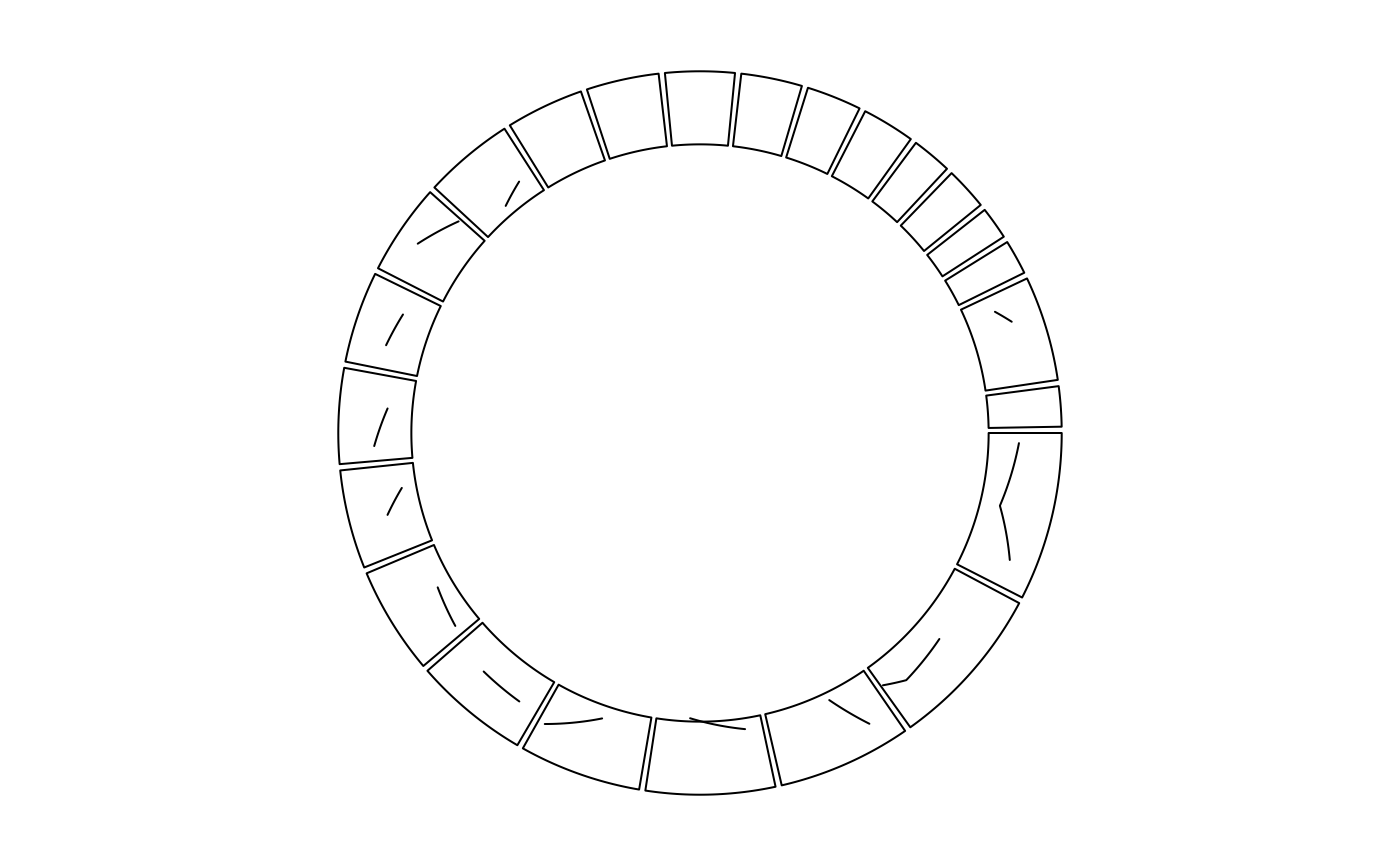Object ccGenomicCellGeom will call the function circlize::circos.genomicLines while drawing.
Usage
ccGenomicLines(
region = NULL,
value = NULL,
numeric.column = NULL,
posTransform = NULL,
col = ifelse(area, "grey", "black"),
lwd = par("lwd"),
lty = par("lty"),
type = "l",
area = FALSE,
area.baseline = NULL,
border = "black",
baseline = "bottom",
pt.col = par("col"),
cex = par("cex"),
pch = par("pch"),
...
)Arguments
- region
A data frame contains 2 column which correspond to start positions and end positions.
- value
A data frame contains values and other information.
- numeric.column
Which column in
valuedata frame should be taken as y-value. If it is not defined, the whole numeric columns invaluewill be taken.- posTransform
Self-defined function to transform genomic positions, see
posTransform.defaultfor explaination.- col
col of lines/areas. If there are more than one numeric column, the length of
colcan be either one or number of numeric columns. If there is only one numeric column and type is eithersegmentorh, the length ofcolcan be either one or number of rows ofregion. pass tocircos.lines- lwd
Settings are similar as
col. Pass tocircos.lines.- lty
Settings are similar as
col. Pass tocircos.lines.- type
There is an additional option
segmentwhich plot segment lines from start position to end position. Settings are similar ascol. Pass tocircos.lines.- area
Settings are similar as
col. Pass tocircos.lines.- area.baseline
Deprecated, use
baselineinstead.- border
Settings are similar as
col. Pass tocircos.lines.- baseline
Settings are similar as
col. Pass tocircos.lines.- pt.col
Settings are similar as
col. Pass tocircos.lines.- cex
Settings are similar as
col. Pass tocircos.lines.- pch
Settings are similar as
col. Pass tocircos.lines.- ...
Mysterious parameters.
Value
Object ccGenomicCellGeom
Examples
library(circlizePlus)
data <- generateRandomBed(nr = 30, nc = 2)
all_chr <- c("chr1", "chr2", "chr3", "chr4", "chr5", "chr6", "chr7", "chr8",
"chr9", "chr10", "chr11", "chr12", "chr13", "chr14", "chr15", "chr16",
"chr17", "chr18", "chr19", "chr20", "chr21", "chr22", "chrX", "chrY")
cc <- ccPlot(initMode = "initializeWithIdeogram", plotType = NULL)
t1 <- ccGenomicTrack(data = data, numeric.column = 4)
cells1 <- ccCells(sector.indexes = all_chr) +
ccGenomicLines(numeric.column = 2)
t1 <- t1 + cells1
show(cc + t1)
#> Note: 1 point is out of plotting region in sector 'chr4', track '1'.
